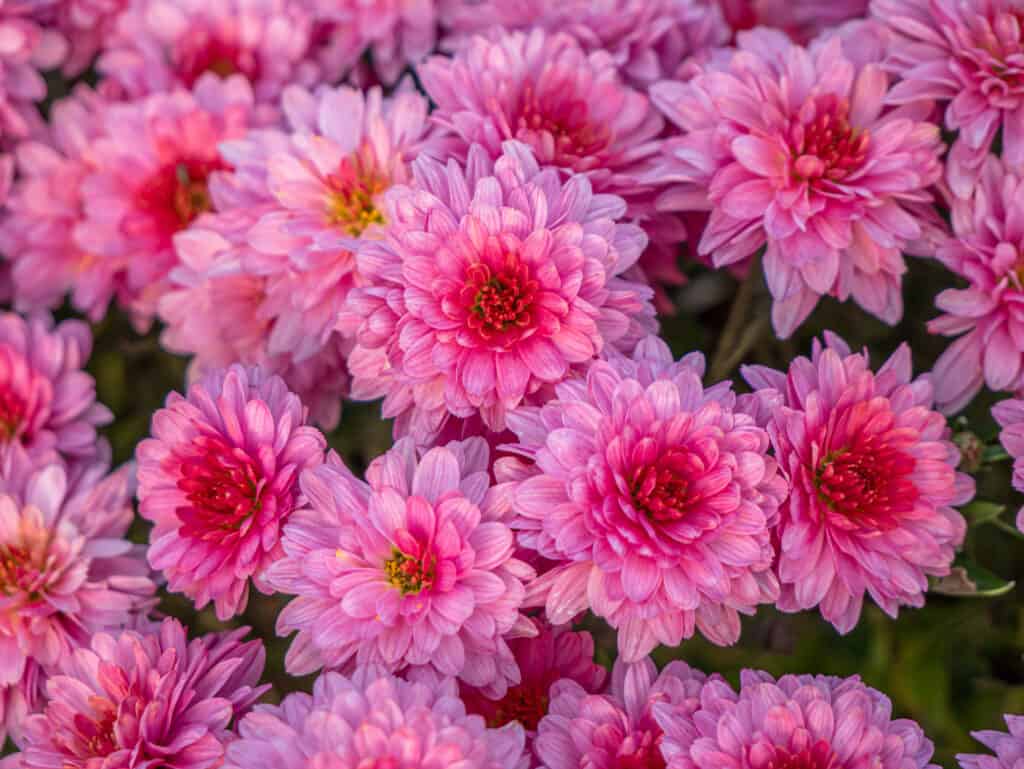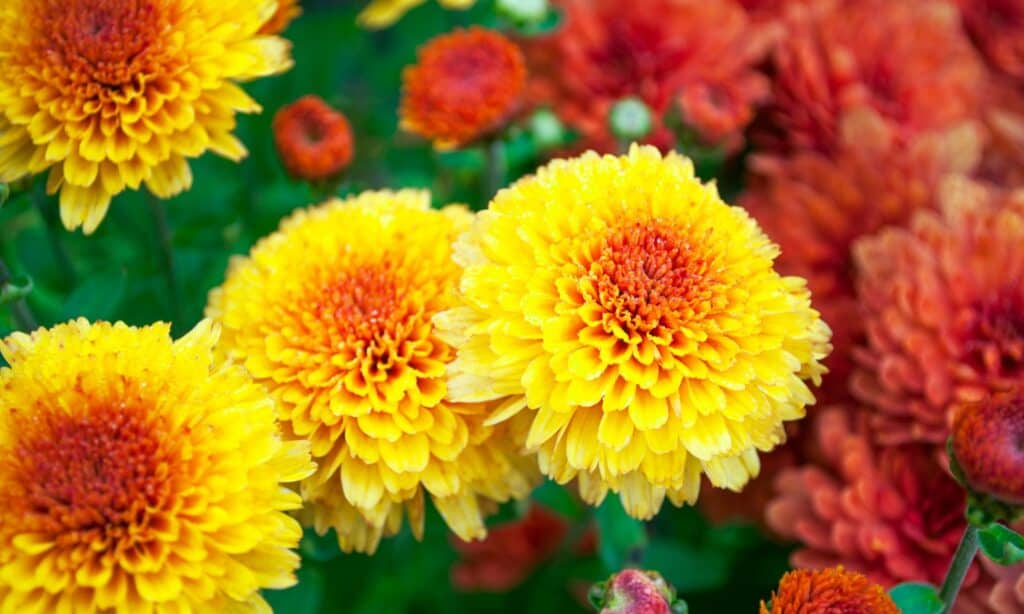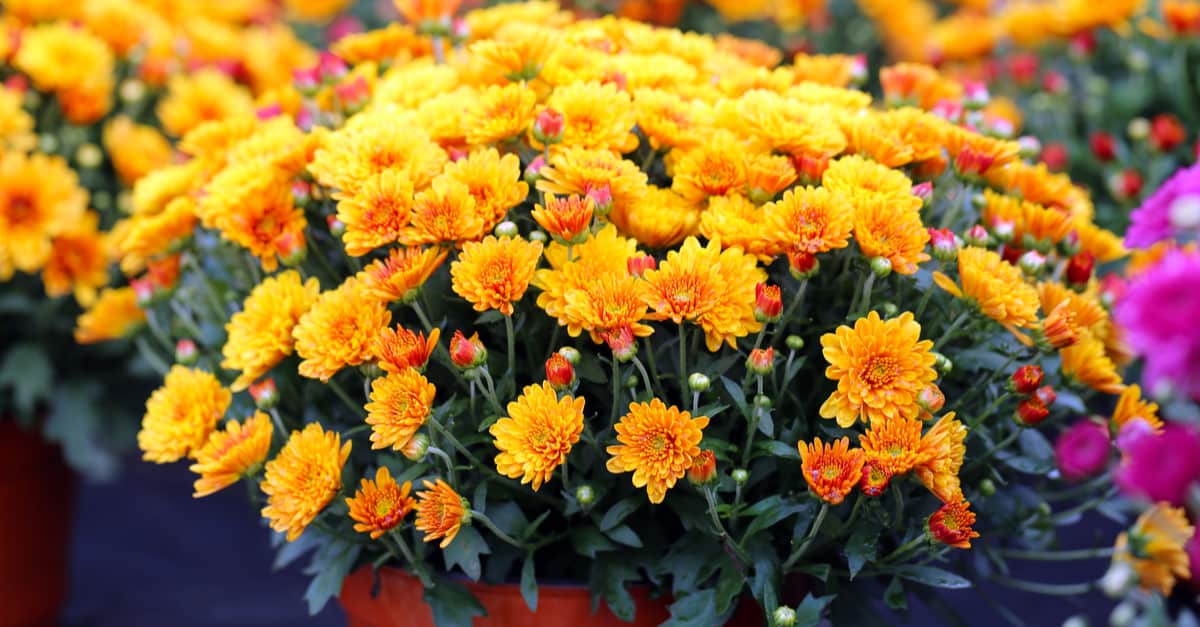Hey there, plant lovers! In the past, you’ve probably brought home a beautiful mum plant, only to see it wither away faster than you can say “autumn.” But fear not, because we’ve got your back with some simple tips to make those mums last longer and keep your garden looking stunning all season long.
Mums, also known as chrysanthemums, are the ultimate fall bloomers, flaunting their vibrant colors and adding that cozy touch to your outdoor space. But they can be a bit finicky, and it’s easy to watch them fade too soon. That’s where these tips come in handy! Let’s start by breaking down exactly what mums are and how long they typically last with the right amount of care and attention.
What are Mums?
Mums, short for Chrysanthemums, are a diverse and beautiful group of flowering plants belonging to the family Asteraceae. Their striking appearance, rich history, and extensive variety make them a beloved choice for gardens and floral arrangements around the world.
Classification
Mums are scientifically classified as members of the genus Chrysanthemum, which falls under the family Asteraceae, commonly known as the aster or daisy family. This family includes numerous other well-known flowers, such as daisies, sunflowers, and marigolds. Within the genus Chrysanthemum, there are many species and cultivars, each with its unique characteristics.
Appearance
Mums are renowned for their distinct and vibrant appearance. These perennial plants typically feature sturdy stems adorned with dense clusters of intricate, daisy-like flowers. The flowers themselves consist of a central disc surrounded by colorful ray petals, which can vary in color, shape, and size. Their color palette spans a wide spectrum, including shades of red, yellow, orange, pink, lavender, and white.
The leaves of mum plants are typically dark green and lobed, with a slightly serrated edge. The overall shape and size of mum plants can vary widely, with some being compact and bushy, while others grow tall and upright. The diversity in appearance makes mums adaptable to various garden designs and decorative purposes.
Origin
Mums have a rich history that traces back to ancient China, where they were first cultivated over 2,500 years ago. Originally grown as a medicinal herb, mums were later cultivated for their ornamental beauty. Chinese emperors admired them, and they became a symbol of nobility and longevity. It wasn’t until the 17th century that mums were introduced to Europe, where they gained popularity and underwent extensive hybridization.
In the late 19th and early 20th centuries, mums made their way to the United States and quickly became a staple in American gardens. Today, mums are grown worldwide, and their global popularity continues to thrive.
Common Varieties
Mums boast a vast array of cultivars, each with its unique charm and characteristics. Some of the most common varieties include:
- Garden Mums (Chrysanthemum morifolium): These are the quintessential mum plants, known for their lush, colorful blooms. They come in various shapes, including daisy-like, cushion, and spider varieties, making them versatile for landscaping.
- Hardy Mums (Chrysanthemum × rubellum): These mums are well-suited for colder climates, as they can withstand frost and bloom late into the autumn season, adding vibrant colors to fall gardens.
- Florist Mums (Chrysanthemum × grandiflorum): These mums are favored for their large, showy flowers and are often used in floral arrangements. They come in a wide range of colors and are a staple in the floral industry.
- Cushion Mums (Chrysanthemum × morifolium ‘Cushion’): Characterized by their compact and rounded growth habit, cushion mums are ideal for borders and container gardens. They produce an abundance of small, button-like flowers.
- Spider Mums (Chrysanthemum × morifolium ‘Spider’): These mums are distinguished by their long, thin petals that resemble spider legs, giving them a unique and eye-catching appearance. They are often used to add texture to floral arrangements.
With all of this in mind, exactly how long do mums last?

Chrysanthemums come in many colors, varieties, bloom types, and sizes.
©Volodymyr Yakovyna/Shutterstock.com
How Long Do Mums Last?
One common question that arises when considering mums for your garden is how long these beautiful blooms typically last. The lifespan of mums can vary depending on several factors, including climate, care, and the specific variety of mums you choose.
Lifespan of Mums
In most regions, mums are considered a perennial plant, which means they can come back year after year under the right conditions. However, the typical blooming period for mums generally lasts from late summer to early winter. During this time, mums display their vibrant colors and add a touch of elegance to gardens and landscapes.
Factors Affecting Lifespan
Climate and Hardiness Zones
Mums are classified into various hardiness zones, which reflect the range of temperatures and conditions in which they can thrive. In colder regions, such as zones 3 to 5, mums may have a shorter blooming season due to the onset of winter frost. However, they can still return in subsequent years if properly protected during the winter months. In milder climates, like zones 6 to 9, mums often last longer, with some varieties even flowering into the winter.
Care and Maintenance
Proper care significantly impacts the longevity of mums. Regular watering, well-drained soil, and adequate sunlight are essential for their health. Deadheading, or removing spent blooms, can encourage new flower growth, extending their blooming period. Additionally, mulching around the base of the plant can help regulate soil temperature and retain moisture.
Variety Selection
The specific variety of mums you choose can affect how long they last. Some varieties, known as “hardy mums” as we mentioned earlier, are bred to withstand colder temperatures and can thrive in regions with harsh winters. Others, like “florist mums,” are more delicate and may require additional protection in colder zones.
Overwintering Mums
To extend the lifespan of mums in colder zones, it’s essential to take measures to protect them during the winter. This includes mulching the base of the plant to insulate the roots, cutting back the foliage after the first frost, and covering the plants with a layer of straw or leaves. These precautions help mums survive the winter and return with vigor in the following growing season.
While it may seem difficult to get your mums to last longer, there are quite a few great tips and tricks out there for getting them to live longer.
Tips for Extending the Lives of Your Mums
To make the most of these delightful flowers and enjoy their beauty for an extended period, it’s essential to understand some key tips and tricks for their care.
Choose the Right Variety
Selecting the right mum variety plays a crucial role in how long they will live and bloom. Consider the following factors when choosing your mums:
- Hardy Mums for Cold Climates: If you live in a region with harsh winters, opt for hardy mum varieties. These mums are bred to withstand colder temperatures and are more likely to survive the winter, returning with a burst of color in the spring. Examples of hardy mums include ‘Crimson Tide’ and ‘Hillside Sheffield.’
- Florist Mums for Longer Blooms: Florist mums, known for their large and showy flowers, tend to have a longer blooming period compared to some other varieties. They are excellent choices for cut flowers and floral arrangements. Varieties like ‘Spider White’ and ‘Yellow Fuji’ are popular choices for longer-lasting blooms.
- Consider Your Climate Zone: Mums are classified into different hardiness zones, reflecting their ability to withstand specific temperature ranges. Ensure you choose mums that are well-suited to your local climate. Check with local nurseries or gardening centers for recommendations on suitable varieties for your region.

Choosing the right variety for your hardiness zone is crucial for extending the life of mum blooms.
©Elan Havrilyuk/Shutterstock.com
Provide Adequate Sunlight
Mums thrive in full sun, which typically means at least six hours of direct sunlight per day. When planting your mums, choose a location in your garden that receives ample sunlight. Insufficient sunlight can result in leggy growth and fewer blooms. Proper placement can help your mums live longer and bloom more abundantly.
Maintain Well-Drained Soil
Good soil drainage is essential for mum’s health. Mums prefer well-drained soil that prevents waterlogged roots, which can lead to root rot and other issues. To ensure proper drainage, add organic matter like compost to your soil. This will not only improve drainage but also enrich the soil, providing essential nutrients for your mums.
Water Wisely
Proper watering is a crucial factor in extending the lifespan and blooming period of mums. Follow these watering tips:
- Consistent Moisture: Mums require consistent moisture but not soggy soil. Water deeply when the top inch of soil feels dry. Be mindful not to overwater, as this can lead to root problems.
- Water at the Base: Water your mums at the base, avoiding wetting the foliage. Wet leaves can lead to diseases and fungal issues.
- Morning Watering: It’s best to water your mums in the morning. This allows the foliage to dry during the day, reducing the risk of diseases.
Prune and Deadhead Regularly
Pruning and deadheading are essential tasks to encourage mums to live longer and bloom more prolifically. Pinch back the growing tips of young mums in late spring or early summer. This encourages bushier growth and more flower buds.
You should also remove faded or spent flowers promptly. Deadheading redirects the plant’s energy towards producing new blooms rather than seed production.
Lastly, in late spring, cut your mum’s plants back by about half their height. This helps maintain a compact shape and encourages more lateral branching, resulting in more flower buds.
Fertilize Appropriately
Proper fertilization can enhance the longevity and blooming period of your mums:
- Use a Balanced Fertilizer: Use a balanced, all-purpose fertilizer with equal amounts of nitrogen, phosphorus, and potassium. Apply it in early spring when new growth begins.
- Avoid Overfeeding: Avoid excessive fertilization, as it can lead to excessive leafy growth at the expense of flowers. Follow the recommended dosage on the fertilizer label.
- Additional Feeding: If your mums show signs of nutrient deficiency, such as yellowing leaves, you can provide a light application of liquid fertilizer during the growing season.
By following these tips and tricks, you can help your mums not only live longer but also bloom more abundantly. Proper variety selection, sunlight, soil care, watering practices, pruning, fertilization, and overwintering strategies all contribute to the health and longevity of your mum plants. With a little care and attention, you can enjoy the colorful beauty of mums in your garden for years to come!
Summary of Tips for Extending The Lives of Your Mums
| # | Tip |
|---|---|
| 1 | Choose the Right Variety |
| 2 | Provide Adequate Sunlight |
| 3 | Maintain Well-Drained Soil |
| 4 | Water Wisely |
| 5 | Prune and Deadhead Regularly |
| 6 | Fertilize Appropriately |
Thank you for reading! Have some feedback for us? Contact the AZ Animals editorial team.








